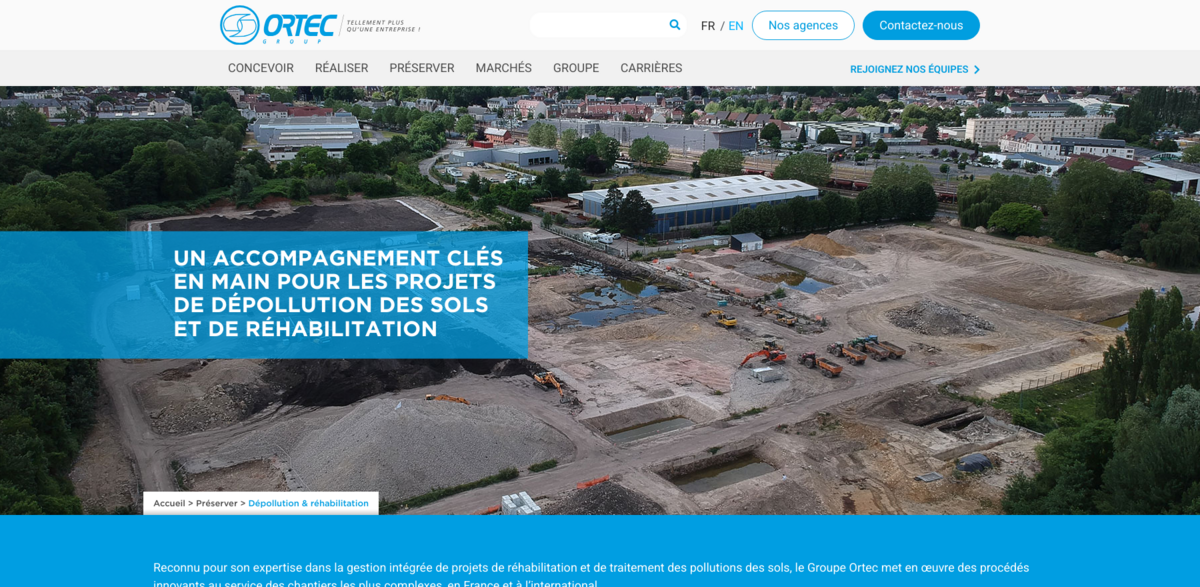What the Project Is About
Soil and groundwater remediation is a crucial step in tackling pollution on industrial and brownfield sites. Soleo Services specializes in this field, focusing on sites contaminated by a wide range of pollutants—hydrocarbons, PAHs, BTEX, chlorinated solvents, heavy metals, and many emerging contaminants. The approach? Implementing physical, chemical, and biological solutions that not only clean up but also promote sustainable and innovative remediation techniques. It’s about making polluted sites safe and usable again, with a keen eye on environmental responsibility.
Main Benefits of the Remediation Project
Here’s what makes this project stand out:
- Expertise in treating complex contamination types, from hydrocarbons to heavy metals.
- Use of cutting-edge physical, chemical, and biological remediation methods.
- Focus on sustainability by promoting innovative and eco-friendly solutions.
- Management of nearly 500,000 tons of organic materials annually through specialized treatment structures.
- Experience in rehabilitating brownfields and industrial sites, restoring them for future use.
Design & Engineering: The Backbone of Remediation
Design and engineering play a pivotal role in remediation projects. This involves all the tools and expertise needed to design, size, and secure remediation operations effectively. It’s not just about cleaning up; it’s about planning every step to ensure safety, efficiency, and long-term success. The Ortec Group, for example, excels in this area, using innovative processes to handle even the most complex sites both in France and internationally.
Remediation Works: Tackling Pollution Head-On
Remediation works involve studying and treating soil and groundwater pollution, adapting to the specific type of contamination present. Whether it’s hydrocarbons, chlorinated solvents, or heavy metals, the treatment is tailored to the site’s unique needs. This hands-on phase is where theory meets practice, turning plans into action to restore polluted environments.
Site Rehabilitation: Giving New Life to Polluted Lands
Rehabilitation projects focus on brownfields and industrial sites, transforming them from contaminated wastelands into safe, usable spaces. This process includes everything from soil treatment to managing organic materials sustainably. The goal is to support a circular economy by recycling impacted materials and reducing waste, as demonstrated by experts like Valorterre, who specialize in soil treatment centers.
Project Impact on Sustainable Development Goals (SDGs)
- SDG 6: Clean Water and Sanitation – by treating polluted groundwater and soil.
- SDG 11: Sustainable Cities and Communities – through rehabilitating brownfields and industrial sites.
- SDG 12: Responsible Consumption and Production – via recycling and circular economy practices.
- SDG 13: Climate Action – by promoting sustainable and innovative remediation methods.
- SDG 15: Life on Land – restoring ecosystems affected by pollution.
Markets and Sectors Benefiting from Remediation
The expertise in pollution remediation and rehabilitation spans multiple markets, including nuclear, chemistry and pharmacy, agro-food, aeronautics and space, railways, local authorities, oil and gas, and real estate. Each sector faces unique contamination challenges, and tailored remediation solutions help ensure environmental safety and regulatory compliance across the board. This broad reach highlights the versatility and importance of effective soil and groundwater remediation in today’s industrial landscape.





















